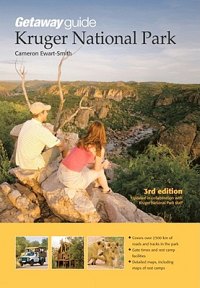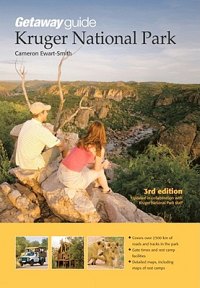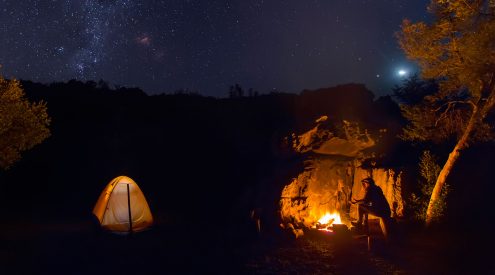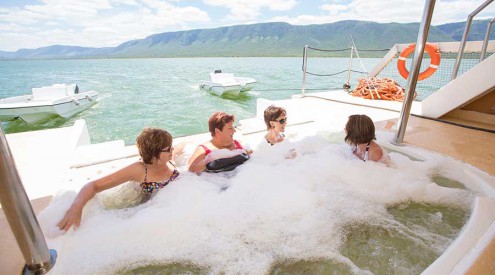Bendys, buffaloes and bulls in Biyamiti Bushveld Camp, Kruger National Park
Winding along the S139, the road reserved for private residents of the camp only, I wonder what surprises this hidden Kruger National Park retreat holds in store this time. Given what it’s provided many times over the years spent visiting it with the family, and the Leopard sighting a few kilometres in from the Malelane Gate on the H3 a short distance before it meets the S114 just over an hour ago, I am excited. Biyamiti Bushveld Camp, nestled in the south eastern corner of the Kruger National Park, has always been a little piece of paradise for me. It was never something I considered reviewing, (this kind of gem is often only worthy of family and close friends), but one thing I can say for certain in all my time visiting the Park while growing up, is that Biyamiti is not just a league above the rest, but more like comparing the World Cup to a haphazard beach soccer kick-about.
Don’t go if you want to go to the shop for a “˜Death By Chocolate’ ice-cream. You might instead be offered a piece of ice to suck on at reception. Biyamiti is about serenity and the bush and other bushveld camps will find it hard to elicit such magical memories as this one can.
Oh well, no surprises this time. It’s hot and I have been in the car for a long time. I probably missed all of the surprises during this little day dreaming session anyway. Well, that and the fact that if I’m hot, the animals are feeling like overheated 4x4s that have just spent twelve hours ploughing through the thick sand of a dry riverbed. Much like that of the Mbiyamiti River that snakes its way like a mature mamba along past the camps northern boundary, in front of my two bedroom self-catering cottage, and on eastward and into the mighty Crocodile River that guards the Parks eastern boundary. The rest of my accommodation, including the main bedrooms en-suite, consists of a more-than-enough kitchen combined with a gas stove and oven, a quaint lounge and necessary mosquito mesh on all windows. There is another bathroom with toilet and shower too. Room enough for the family and an extra if necessary, with ceiling fans providing mozzie turbulence and mild heat protection as a bonus. The lounge opens onto a furnished veranda that serves as your dining area. Just be prepared to welcome bats in and out during dinner time.
The camp itself consists of ten of the two-bedroom units and five one-bedroom units, all facing the rivers southern bank, but set back to allow ample room for any unpredicted flooding which the Kruger’s rivers are prone to. A trail exists along the entire interior perimeter fence of the camp and is wonderful for some leisurely bird watching. The patient will be rewarded with unique sightings of the Barred Owl, the illusive owl active mainly during daylight hours as well as numerous other species carrying out their daily routines. Don’ forget the bird hide either – a must for any enthusiast.
Although the exclusivity of the area and the what feels-like-longer fifteen kilometre stretch of S139 allows one to imagine the feeling of being completely on one’s own when out for an early morning drive, it’s even better when the camp is not fully booked. So try and plan your visit during the week as the camps close proximity to a few park gates makes it a popular weekend spot for donors and guests alike. A quick meander a short distance west from the camp will bring you to one of the most beautiful get out points the park has to offer. My advice: romantic sundowners. Situated so close to camp there is more than ample time available to get back before the camp gates close either side of the beginning and end of the summer months of October through March. Chances are you’ll be there alone and gaze upon some wonderful moments nature can offer when you allow yourself to slow down and go with the flow of bush time. Bear in mind that summer is the rainy season, so don’t forget to pop the “˜brolly in if you’ll be visiting then.
Make the time to cover a few of the loop-type roads that swathe most of the areas Delagoa Thorn Thicket and Sabie or Crocodile Thorn Thicket vegetation as you’ll find this vicinity of the Park rich in game. My sightings included a bonding session some wild dogs had with the 4x4s tires along the S26 and plenty of Bendys (family Giraffe jargon), musty male elephants (also another hazard to watch out for in this area!), the odd dagga bull buffalo and some great sightings of plains game, many with newborns.
Another must-see spot, and one worth spending a morning or afternoon at, is Mpondo Dam just off the H5. You could drive back via the S26 and pick up any necessities needed at Crocodile Bridge Rest Camp just off the beaten track and be back in time for a quite braai with the sounds of lions and hyenas cavorting into the evening.
If you don’t have a travel to-do-list already going and are unsure about your next holiday, start one and put Biyamiti at the top. If you do have one and have been before, go on, put Biyamiti back on it, I know you want to go again.
• Top tip: day and night drives as well as day walks leaving from camp
• Visit www.sanparks.org for more info and to book
• Accommodation ranging from R700 – R1475
• Best time to visit: September – March
Want the Kruger guidebook? Buy the Getaway Guide to Kruger National Park here.



















